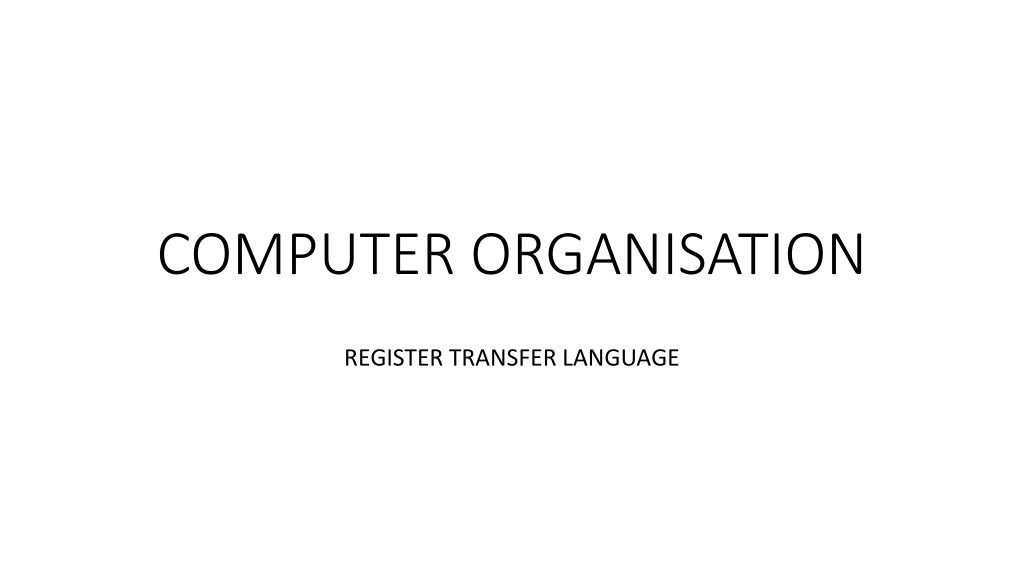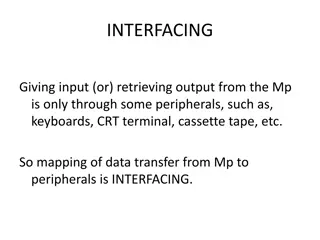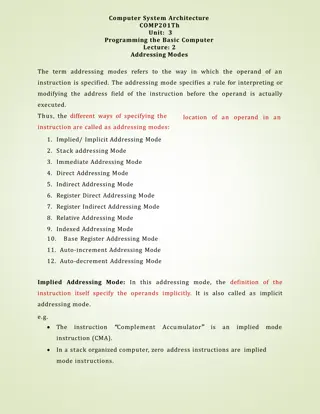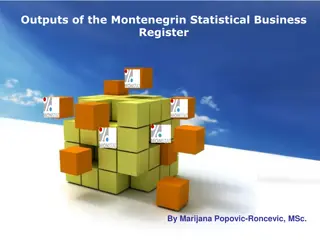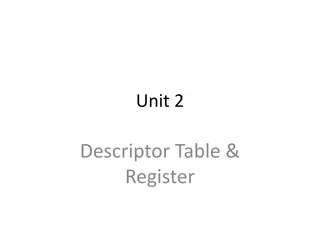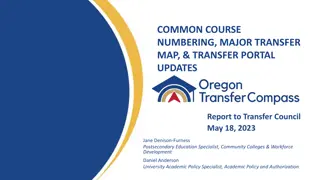COMPUTER ORGANISATION Register Transfer Language
Register Transfer Language is a symbolic notation used to describe the micro-operations transferring data among registers in computer organisation. It signifies the availability of hardware logic circuits to perform specified micro-operations and transfer results between registers. Register Transfer Language draws inspiration from programming languages and serves as a symbolic representation for computational processes involving data transfers between registers. Micro-operations, such as shift, count, clear, and load, are elementary operations executed on data stored in registers. Different types of micro-operations in digital computers include register transfer, arithmetic operations, logic operations, and shift operations.
Download Presentation

Please find below an Image/Link to download the presentation.
The content on the website is provided AS IS for your information and personal use only. It may not be sold, licensed, or shared on other websites without obtaining consent from the author. Download presentation by click this link. If you encounter any issues during the download, it is possible that the publisher has removed the file from their server.
E N D
Presentation Transcript
COMPUTER ORGANISATION REGISTER TRANSFER LANGUAGE
What Is Register Transfer Language? The symbolic notation used to describe the micro-operation transfers amongst registers is called Register transfer language. The term register transfer means the availability of hardware logic circuits that can perform a stated micro-operation and transfer the result of the operation to the same or another register. The word language is borrowed from programmers who apply this term to programming languages. This programming language is a procedure for writing symbols to specify a given computational process.
Register Transfer Information transferred from one register to another is designated in symbolic form by means of replacement operator. R2 R1 It denotes the transfer of the data from register R1 into R2. Normally we want the transfer to occur only in predetermined control condition. This can be shown by following if-then statement: if (P=1) then (R2 R1)
Micro-Operations The operations executed on data stored in registers are called micro- operations. A micro-operation is an elementary operation performed on the information stored in one or more registers. Example: Shift, count, clear and load.
Types of Micro-Operations: The micro-operations in digital computers are of 4 types: 1. Register transfer micro-operations transfer binary information from one register to another. 2. Arithmetic micro-operations perform arithmetic operations on numeric data stored in registers. 3. Logic micro-operations perform bit manipulation operation on non-numeric data stored in registers. 4. Shift micro-operations perform shift micro-operations performed on data.
